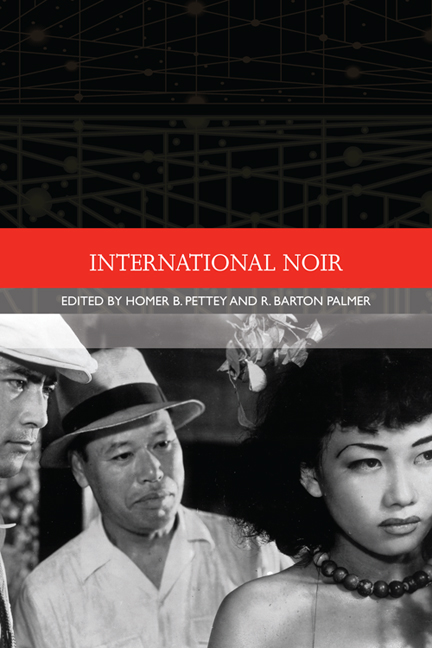Book contents
- Frontmatter
- Contents
- List of Illustrations
- Acknowledgements
- Notes on the Contributors
- Traditions in World Cinema
- Introduction: The Noir Impulse
- 1 British Noir
- 2 French Noir 1947–79: From Grunge-noir to Noir-hilism
- 3 French Neo-noir: An Aesthetic for the Policier
- 4 Early Japanese Noir
- 5 The Gunman and the Gun: Japanese Film Noir since the Late 1950s
- 6 Darker than Dark: Film Noir in its Asian Contexts
- 7 Nordic Noir and Neo-noir: The Human Criminal
- 8 Indian Film Noir
- 9 The New Sincerity of Neo-noir
- 10 Post-noir: Getting Back to Business
- Selected Bibliography of International Film Noir
- Selected Filmography of International Film Noir
- Index
4 - Early Japanese Noir
Published online by Cambridge University Press: 05 August 2016
- Frontmatter
- Contents
- List of Illustrations
- Acknowledgements
- Notes on the Contributors
- Traditions in World Cinema
- Introduction: The Noir Impulse
- 1 British Noir
- 2 French Noir 1947–79: From Grunge-noir to Noir-hilism
- 3 French Neo-noir: An Aesthetic for the Policier
- 4 Early Japanese Noir
- 5 The Gunman and the Gun: Japanese Film Noir since the Late 1950s
- 6 Darker than Dark: Film Noir in its Asian Contexts
- 7 Nordic Noir and Neo-noir: The Human Criminal
- 8 Indian Film Noir
- 9 The New Sincerity of Neo-noir
- 10 Post-noir: Getting Back to Business
- Selected Bibliography of International Film Noir
- Selected Filmography of International Film Noir
- Index
Summary
In the Japanese language, 黒 (kuro or koku) shares similar meanings with the French word noir, such as the visual absence of colour, black, dark and shadowed, as well as the metaphorical associations with emptiness, mystery and evil. The complex aesthetic history of Japanese filmmaking, however, reveals not only its adaptation of proto-noir and noir techniques, but also the development of its own noir sensibility. Shifting values of modernism, existential angst and paranoia, crises of socio-economic identity, a sense of doom, pervading neurasthenia and resignation to failure, sceptical views of progress as well as ambivalent views of the past, the penchant for violent and sexual narratives, and the creation of a chiaroscuro aesthetic that mirrored psychological and ethical problems – these certain tendencies of film noir were already ingrained within the Japanese literary and artistic consciousness. While early Japanese filmmakers, very much like their American counterparts, relied upon modernist technological, narrative and aesthetic experiments from Europe, they did so by adapting and transforming them into a twentieth-century Japanese art form. Both proto-noir and early Japanese noir reveal a cultural fascination for modernity and its re-evaluation of social and gender roles for those struggling at the margins of contemporary urban life.
The concept of blackness frames American aesthetic, cultural and political influences on modern Japan. Two significant intrusions upon Japan have been characterised in the Japanese language as blackness. In July 1853, the opening of Japan occurred with the arrival in Kanagawa (now Yokohama) harbour of Commodore Matthew Perry's black ships (kuroi fune), four warships with sixty-one guns and nearly 1,000 men. In August 1945, the radioactive fallout from the Hiroshima and Nagasaki atomic bombs produced black rain (kuroi ame), the result of irradiated material combining with thermal currents to create precipitation of dark, viscous and poisonous liquid. Perry's opening of Japan led to the introduction of Western culture and technology that eventuated in the supremacy of the new modernised Japanese navy dominating the northern Pacific after its victory in the Russo-Japanese War. The Treaty of Portsmouth of 1905, negotiated by President Theodore Roosevelt, ended that conflict by ultimately dividing the Pacific, with Japan gaining control of Korea and the United States maintaining dominance in the Philippines. From that moment, Japan's nationalist militarist politics would lead to its successive invasions throughout Manchuria, China, Southeast Asia and the southern Pacific islands, resulting in World War II.
- Type
- Chapter
- Information
- International Noir , pp. 85 - 111Publisher: Edinburgh University PressPrint publication year: 2014



